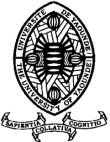Cortical Blindness Revealed by Stenosis of Basilar Trunk
DOI:
https://doi.org/10.5281/hra.v1i3%20Jul-Aug-Sep.4824Abstract
ABSTRACT
We report the case of a well-controlled 75-year-old hypertensive patient, brought for emergency care by his son for non-specific visual disorders. Clinical assessment evoked cortical blindness. A cerebral computed tomography (CT) and an angio-scanner of the supra-aortic vessels were requested revealing ischemic lesions on the territories of the posterior cerebral arteries related to basilar trunk stenosis. The peculiarity of this case is the occurrence of cortical blindness despite the good control of high blood pressure, which appears to be the only risk factor, and the absence of vision recovery after 13 months of follow-up, which is exceptional according to the literature.
RÉSUMÉ
Nous rapportons le cas d’un patient de 75 ans hypertendu bien contrôlé amené en urgence par son fils pour des troubles visuels non spécifiques. L’évaluation ophtalmologique a permis d’évoquer une cécité corticale. Une Tomodensitométrie cérébral et une angio-scanner des vaisseaux supra-aortiques ont été demandés révélant des lésions ischémiques sur les territoires des artères cérébrales postérieures en rapport avec une sténose du tronc basilaire. La particularité de ce cas est la survenue de cécité corticale malgré la bonne maîtrise de l'hypertension artérielle, qui semble être le seul facteur de risque, et l'absence totale de récupération fonctionnelle après 13 mois de suivi, ce qui est exceptionnel selon la littérature.
Downloads
Published
How to Cite
Issue
Section
License
Authors who publish with this journal agree to the following terms:
- Authors retain copyright and grant the journal right of first publication with the work simultaneously licensed under a Creative Commons Attribution License CC BY-NC-ND 4.0 that allows others to share the work with an acknowledgement of the work's authorship and initial publication in this journal.
- Authors are able to enter into separate, additional contractual arrangements for the non-exclusive distribution of the journal's published version of the work (e.g., post it to an institutional repository or publish it in a book), with an acknowledgement of its initial publication in this journal.
- Authors are permitted and encouraged to post their work online (e.g., in institutional repositories or on their website) prior to and during the submission process, as it can lead to productive exchanges, as well as earlier and greater citation of published work










